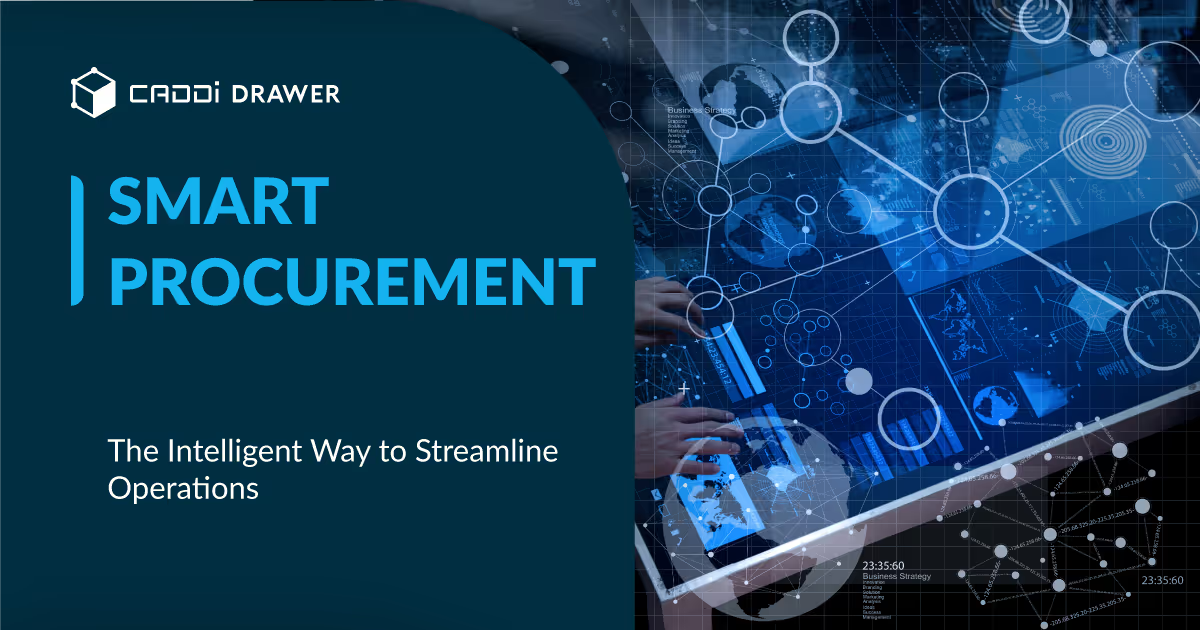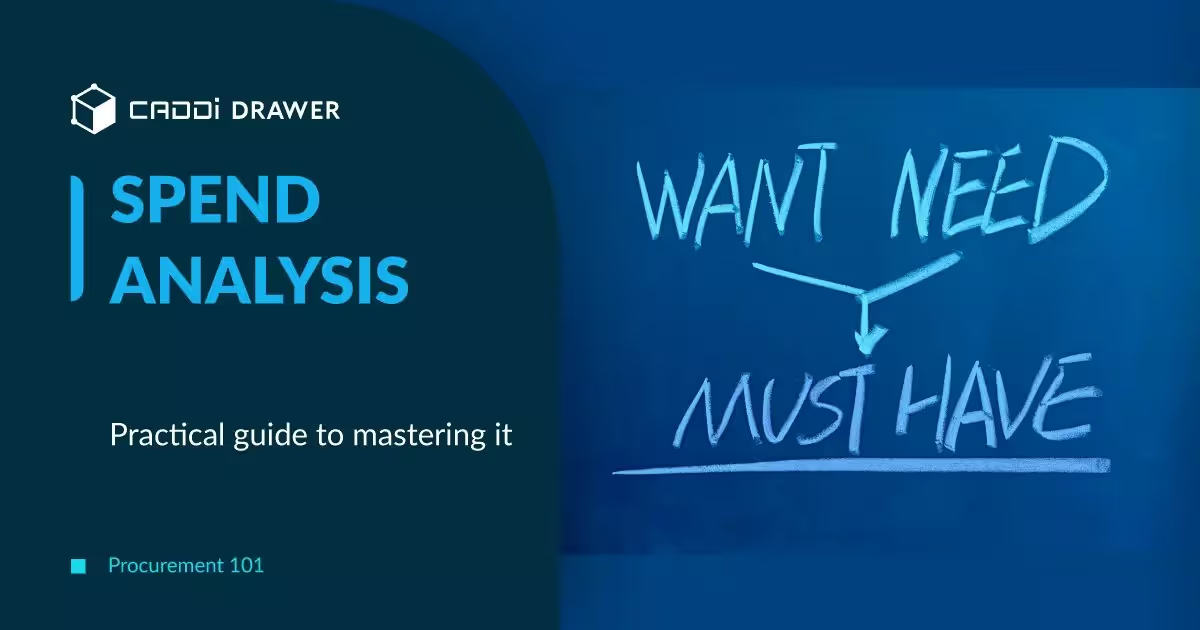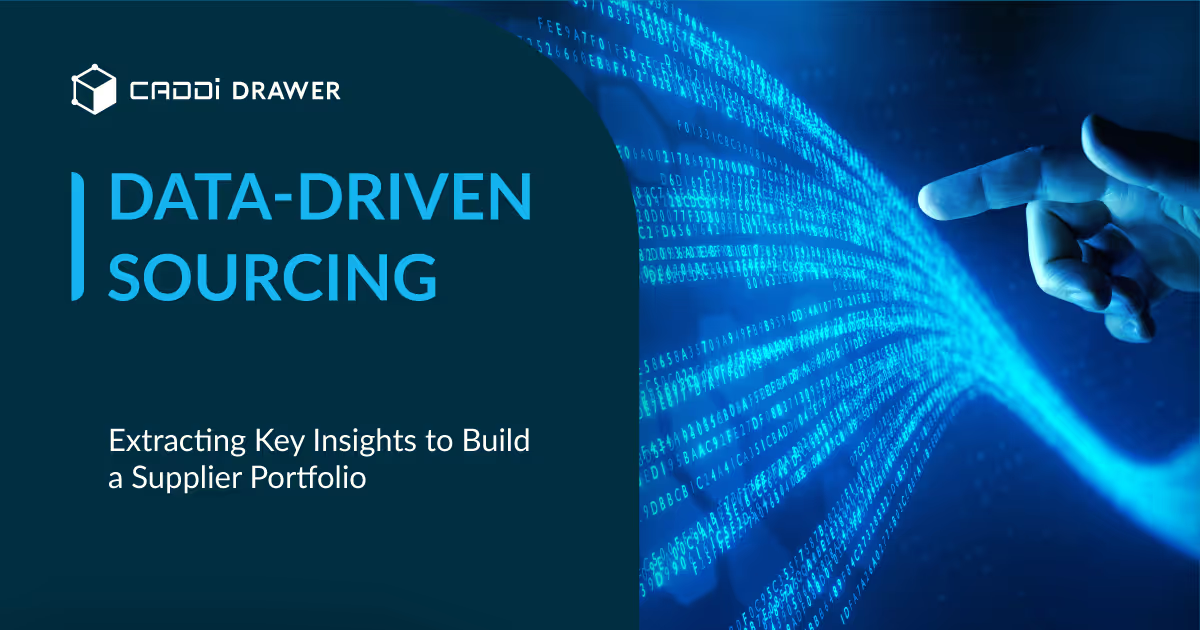Procurement 101: e-Procurement – Let’s refresh outdated concepts

Table of Contents

E-Procurement, after decades of evolution, is now entering a new stage
E-procurement is not a novel concept; its roots trace back decades, evolving significantly over time.
The use of Electronic Data Interchange (EDI) for transactions between businesses within the procurement domain was developed in the 1960s. This technology facilitated the electronic exchange of business information, including purchase orders and invoices, directly between the business systems of trading partners, marking a revolutionary step forward in efficiency and speed over manual processes. The integration of EDI with ERP systems began with large corporations, aiming to streamline operations and enhance supply chain management.
However, these systems have increasingly become viewed as legacy systems. In some cases, they are now seen as liabilities rather than assets in procurement activities. Their rigid structures can hinder flexibility, and maintenance can be costly and resource-intensive.
In recent years, the proliferation of cloud-based software and the expanding use of AI are driving e-procurement into its next evolutionary stage. Cloud-based procurement solutions offer several advantages over traditional systems, including scalability, ease of access, and reduced overhead costs. They enable organizations of all sizes to leverage the power of e-procurement without significant upfront investment in infrastructure.
We would like to introduce the direction of such evolution and the specific tools that are emerging within it.
Challenges of traditional systems
EDI and traditional ERP systems have been instrumental in automating and streamlining business processes for decades.
EDI facilitated the electronic exchange of business documents between companies, improving efficiency and reducing errors associated with manual processing. Traditional ERP systems, on the other hand, integrated various business processes within an organization, from procurement and supply chain management to finance and human resources, into a single, unified system.
Despite their benefits, both EDI and traditional ERP systems face significant challenges in today’s fast-paced, digital-first business environment.
Lack of flexibility
One major challenge is the lack of flexibility. Traditional ERP systems are often inflexible, making it difficult for businesses to adapt to changing market conditions or integrate new technologies. Customizing these systems to meet specific business needs can be costly and time-consuming, and it often requires specialized knowledge.
High cost of maintenance
Another issue is the high cost of maintenance and upgrades. Traditional ERP systems require significant upfront investment and ongoing maintenance fees. Upgrades can be disruptive and expensive, with companies sometimes having to navigate complex updates that may cause operational downtime.
Limited interoperability
Interoperability is also a concern. EDI and traditional ERP systems often struggle to communicate with systems outside of their network or with newer technologies, leading to silos of information and inefficiencies in business processes.
Solutions offered by new applications
Cloud-based software addresses these challenges head-on. By leveraging the cloud, these solutions offer greater flexibility, allowing businesses to easily scale their operations up or down as needed.
They can be updated regularly with minimal disruption, ensuring that businesses always have access to the latest features and security enhancements without the need for significant additional investment.
Cost-effectiveness is another key advantage. Cloud-based solutions typically operate on a subscription model, which reduces the need for large upfront investments and spreads costs over time. Maintenance and upgrades are handled by the service provider, further reducing the total cost of ownership.
Furthermore, cloud-based software is designed to be interoperable, facilitating seamless integration through API with a wide range of applications and services. This interoperability breaks down information silos, enhances data sharing across platforms, and enables businesses to adopt a best-of-breed approach, selecting the most suitable tools for each function rather than being locked into a single vendor’s ecosystem.
Major categories of emerging e-procurement solutions
These applications can be broadly categorized into multiple groups, each serving specific procurement functions with distinct features and benefits.
1. E-Sourcing and E-Tendering Tools
These applications are designed to automate and streamline the process of finding and engaging suppliers. They support activities like managing Requests for Information (RFIs), Requests for Proposal (RFPs), and Requests for Quotation (RFQs), making the supplier selection process more efficient and transparent.
RFP360: This tool focuses on enhancing the RFP (Request for Proposal) process, offering features for creating, managing, and responding to RFPs. It streamlines communication and collaboration between buyers and suppliers, making the sourcing process more efficient.
SAP Ariba: A comprehensive sourcing solution that facilitates e-tendering, e-sourcing, and supply chain collaboration. It offers a global network of suppliers for competitive bidding and sourcing.
Keelvar: Specializes in sourcing optimization and e-tendering through advanced algorithms and AI. Keelvar’s unique approach enables procurement teams to conduct complex sourcing events more efficiently, leveraging AI to automate bid analysis and scenario comparison.
CADDi Drawer: Enhances e-sourcing by integrating drawing data, supplier info, and procurement data, streamlining supplier selection and sourcing planning with advanced search features such as drawing similarity search.
2. Vendor and Contract Management
Tools in this category focus on optimizing vendor relationships throughout the lifecycle, from onboarding to performance evaluation and ongoing management. They provide real-time insights into vendor performance, help manage contracts more effectively, and ensure compliance and optimal service value.
Onspring: It is a vendor management tool that provides real-time insights into vendor performance. It facilitates contract review, spend analysis, and vendor collaboration, ensuring that relationships with vendors are optimized for value and compliance.
Coupa: Offers robust vendor management functionalities including supplier risk management, performance analysis, and contract lifecycle management, ensuring compliance and maximizing value.
3. Spend Analysis Software
Spend analysis tools collect, classify, and analyze expenditure data to identify cost-saving opportunities, improve compliance, and enhance procurement efficiency.
SpendHQ: SpendHQ offers detailed visibility into spending data with easy-to-use data visualization tools. It’s designed to help organizations optimize spending, improve compliance, and realize savings through effective spend analysis.
Procurify: A spend management solution that offers real-time tracking of expenditures, approvals, and budget compliance, helping organizations control spending and gain insights into procurement data.
CADDi Drawer: It employs drawing-linked data for in-depth spend analysis and supplier performance, enabling strategic procurement decisions through comprehensive data insights.
4. E-Ordering and E-Catalogs
Aimed at simplifying the purchasing process, these tools enable organizations to automate order placement and manage product catalogs electronically. They facilitate easy access to approved supplier catalogs, streamline order processing, and improve the accuracy of procurement operations.
Tools in this category are often part of broader procurement solutions, offering functionalities to automate order placements and manage catalogs. Solutions like SAP Ariba and Coupa are known to provide robust e-ordering and e-catalog capabilities.
SciQuest by JAGGAER: Specializes in automated spend management solutions that include e-ordering through customizable e-catalogs, streamlining the procurement process.
5. E-Invoicing and E-Payment
These applications automate the invoicing and payment processes, reducing errors associated with manual handling and speeding up transaction times. They support electronic invoice presentation and processing, ensuring timely and accurate payments to suppliers.
Basware: It is a leader in providing e-invoicing solutions. It automates the invoice-to-pay process, ensuring that invoices are processed efficiently, accurately, and in compliance with global regulations.
Tradeshift: A flexible platform for e-invoicing, supplier engagement, and financial transactions. It enhances efficiency and digitizes the payment process.
Taulia: Focuses on supply chain finance and e-invoicing, offering dynamic discounting and supplier financing options to improve cash flow and reduce procurement costs.
6. Reporting and Analytics
With a focus on improving procurement insights, these tools offer capabilities for tracking and analyzing procurement data, enabling organizations to generate comprehensive reports on spending, supplier performance, and procurement efficiency. Advanced reporting tools help identify trends, monitor compliance, and optimize procurement strategies.
Tableau: While not exclusively a procurement tool, Tableau can be used to create advanced procurement analytics. It helps organizations visualize procurement data, analyze trends, and generate actionable insights to improve procurement performance.
Zycus: Offers advanced procurement analytics and reporting tools, enabling organizations to conduct deep spend analysis and gain strategic insights.
Ivalua: A procurement solution that provides comprehensive spend analysis, supplier scoring, and procurement dashboard capabilities for enhanced decision-making.
7. Integration and Automation Platforms
These systems facilitate seamless integration between e-procurement tools and other business systems, such as ERP and CRM solutions. They ensure that procurement data flows smoothly across different organizational systems, enhancing data accuracy and operational efficiency.
GEP SMART: It utilizes AI and machine learning to provide a comprehensive procurement platform that offers spend analysis, savings tracking, contract and supplier management, and more. Its AI capabilities enable predictive analytics, intelligent automation, and enhanced decision-making for procurement professionals.
Fairmarkit: It leverages machine learning and automation to offer a streamlined procurement process, enhancing the efficiency of purchasing operations by integrating with existing procurement systems. It simplifies the management of less frequent, lower-value purchases, often referred to as tail spend, by automating the sourcing process with AI-powered supplier recommendations.
Kissflow Procurement Cloud: An intuitive platform that automates procurement processes and integrates with existing ERP systems, facilitating smooth data flow and operational efficiency.
Conclusion
As the landscape of procurement continues to evolve, driven by technological advancements and the increasing demand for streamlined operations, e-procurement solutions emerge as indispensable allies.
e-procurement stands at the forefront of revolutionizing procurement processes, offering unprecedented efficiencies, cost savings, and strategic advantages. By integrating advanced tools like CADDi Drawer, organizations can navigate the complexities of sourcing, spend analysis, and supplier management with greater precision and insight.
E-Procurement, after decades of evolution, is now entering a new stage
E-procurement is not a novel concept; its roots trace back decades, evolving significantly over time.
The use of Electronic Data Interchange (EDI) for transactions between businesses within the procurement domain was developed in the 1960s. This technology facilitated the electronic exchange of business information, including purchase orders and invoices, directly between the business systems of trading partners, marking a revolutionary step forward in efficiency and speed over manual processes. The integration of EDI with ERP systems began with large corporations, aiming to streamline operations and enhance supply chain management.
However, these systems have increasingly become viewed as legacy systems. In some cases, they are now seen as liabilities rather than assets in procurement activities. Their rigid structures can hinder flexibility, and maintenance can be costly and resource-intensive.
In recent years, the proliferation of cloud-based software and the expanding use of AI are driving e-procurement into its next evolutionary stage. Cloud-based procurement solutions offer several advantages over traditional systems, including scalability, ease of access, and reduced overhead costs. They enable organizations of all sizes to leverage the power of e-procurement without significant upfront investment in infrastructure.
We would like to introduce the direction of such evolution and the specific tools that are emerging within it.
Challenges of traditional systems
EDI and traditional ERP systems have been instrumental in automating and streamlining business processes for decades.
EDI facilitated the electronic exchange of business documents between companies, improving efficiency and reducing errors associated with manual processing. Traditional ERP systems, on the other hand, integrated various business processes within an organization, from procurement and supply chain management to finance and human resources, into a single, unified system.
Despite their benefits, both EDI and traditional ERP systems face significant challenges in today’s fast-paced, digital-first business environment.
Lack of flexibility
One major challenge is the lack of flexibility. Traditional ERP systems are often inflexible, making it difficult for businesses to adapt to changing market conditions or integrate new technologies. Customizing these systems to meet specific business needs can be costly and time-consuming, and it often requires specialized knowledge.
High cost of maintenance
Another issue is the high cost of maintenance and upgrades. Traditional ERP systems require significant upfront investment and ongoing maintenance fees. Upgrades can be disruptive and expensive, with companies sometimes having to navigate complex updates that may cause operational downtime.
Limited interoperability
Interoperability is also a concern. EDI and traditional ERP systems often struggle to communicate with systems outside of their network or with newer technologies, leading to silos of information and inefficiencies in business processes.
Solutions offered by new applications
Cloud-based software addresses these challenges head-on. By leveraging the cloud, these solutions offer greater flexibility, allowing businesses to easily scale their operations up or down as needed.
They can be updated regularly with minimal disruption, ensuring that businesses always have access to the latest features and security enhancements without the need for significant additional investment.
Cost-effectiveness is another key advantage. Cloud-based solutions typically operate on a subscription model, which reduces the need for large upfront investments and spreads costs over time. Maintenance and upgrades are handled by the service provider, further reducing the total cost of ownership.
Furthermore, cloud-based software is designed to be interoperable, facilitating seamless integration through API with a wide range of applications and services. This interoperability breaks down information silos, enhances data sharing across platforms, and enables businesses to adopt a best-of-breed approach, selecting the most suitable tools for each function rather than being locked into a single vendor’s ecosystem.
Major categories of emerging e-procurement solutions
These applications can be broadly categorized into multiple groups, each serving specific procurement functions with distinct features and benefits.
1. E-Sourcing and E-Tendering Tools
These applications are designed to automate and streamline the process of finding and engaging suppliers. They support activities like managing Requests for Information (RFIs), Requests for Proposal (RFPs), and Requests for Quotation (RFQs), making the supplier selection process more efficient and transparent.
RFP360: This tool focuses on enhancing the RFP (Request for Proposal) process, offering features for creating, managing, and responding to RFPs. It streamlines communication and collaboration between buyers and suppliers, making the sourcing process more efficient.
SAP Ariba: A comprehensive sourcing solution that facilitates e-tendering, e-sourcing, and supply chain collaboration. It offers a global network of suppliers for competitive bidding and sourcing.
Keelvar: Specializes in sourcing optimization and e-tendering through advanced algorithms and AI. Keelvar’s unique approach enables procurement teams to conduct complex sourcing events more efficiently, leveraging AI to automate bid analysis and scenario comparison.
CADDi Drawer: Enhances e-sourcing by integrating drawing data, supplier info, and procurement data, streamlining supplier selection and sourcing planning with advanced search features such as drawing similarity search.
2. Vendor and Contract Management
Tools in this category focus on optimizing vendor relationships throughout the lifecycle, from onboarding to performance evaluation and ongoing management. They provide real-time insights into vendor performance, help manage contracts more effectively, and ensure compliance and optimal service value.
Onspring: It is a vendor management tool that provides real-time insights into vendor performance. It facilitates contract review, spend analysis, and vendor collaboration, ensuring that relationships with vendors are optimized for value and compliance.
Coupa: Offers robust vendor management functionalities including supplier risk management, performance analysis, and contract lifecycle management, ensuring compliance and maximizing value.
3. Spend Analysis Software
Spend analysis tools collect, classify, and analyze expenditure data to identify cost-saving opportunities, improve compliance, and enhance procurement efficiency.
SpendHQ: SpendHQ offers detailed visibility into spending data with easy-to-use data visualization tools. It’s designed to help organizations optimize spending, improve compliance, and realize savings through effective spend analysis.
Procurify: A spend management solution that offers real-time tracking of expenditures, approvals, and budget compliance, helping organizations control spending and gain insights into procurement data.
CADDi Drawer: It employs drawing-linked data for in-depth spend analysis and supplier performance, enabling strategic procurement decisions through comprehensive data insights.
4. E-Ordering and E-Catalogs
Aimed at simplifying the purchasing process, these tools enable organizations to automate order placement and manage product catalogs electronically. They facilitate easy access to approved supplier catalogs, streamline order processing, and improve the accuracy of procurement operations.
Tools in this category are often part of broader procurement solutions, offering functionalities to automate order placements and manage catalogs. Solutions like SAP Ariba and Coupa are known to provide robust e-ordering and e-catalog capabilities.
SciQuest by JAGGAER: Specializes in automated spend management solutions that include e-ordering through customizable e-catalogs, streamlining the procurement process.
5. E-Invoicing and E-Payment
These applications automate the invoicing and payment processes, reducing errors associated with manual handling and speeding up transaction times. They support electronic invoice presentation and processing, ensuring timely and accurate payments to suppliers.
Basware: It is a leader in providing e-invoicing solutions. It automates the invoice-to-pay process, ensuring that invoices are processed efficiently, accurately, and in compliance with global regulations.
Tradeshift: A flexible platform for e-invoicing, supplier engagement, and financial transactions. It enhances efficiency and digitizes the payment process.
Taulia: Focuses on supply chain finance and e-invoicing, offering dynamic discounting and supplier financing options to improve cash flow and reduce procurement costs.
6. Reporting and Analytics
With a focus on improving procurement insights, these tools offer capabilities for tracking and analyzing procurement data, enabling organizations to generate comprehensive reports on spending, supplier performance, and procurement efficiency. Advanced reporting tools help identify trends, monitor compliance, and optimize procurement strategies.
Tableau: While not exclusively a procurement tool, Tableau can be used to create advanced procurement analytics. It helps organizations visualize procurement data, analyze trends, and generate actionable insights to improve procurement performance.
Zycus: Offers advanced procurement analytics and reporting tools, enabling organizations to conduct deep spend analysis and gain strategic insights.
Ivalua: A procurement solution that provides comprehensive spend analysis, supplier scoring, and procurement dashboard capabilities for enhanced decision-making.
7. Integration and Automation Platforms
These systems facilitate seamless integration between e-procurement tools and other business systems, such as ERP and CRM solutions. They ensure that procurement data flows smoothly across different organizational systems, enhancing data accuracy and operational efficiency.
GEP SMART: It utilizes AI and machine learning to provide a comprehensive procurement platform that offers spend analysis, savings tracking, contract and supplier management, and more. Its AI capabilities enable predictive analytics, intelligent automation, and enhanced decision-making for procurement professionals.
Fairmarkit: It leverages machine learning and automation to offer a streamlined procurement process, enhancing the efficiency of purchasing operations by integrating with existing procurement systems. It simplifies the management of less frequent, lower-value purchases, often referred to as tail spend, by automating the sourcing process with AI-powered supplier recommendations.
Kissflow Procurement Cloud: An intuitive platform that automates procurement processes and integrates with existing ERP systems, facilitating smooth data flow and operational efficiency.
Conclusion
As the landscape of procurement continues to evolve, driven by technological advancements and the increasing demand for streamlined operations, e-procurement solutions emerge as indispensable allies.
e-procurement stands at the forefront of revolutionizing procurement processes, offering unprecedented efficiencies, cost savings, and strategic advantages. By integrating advanced tools like CADDi Drawer, organizations can navigate the complexities of sourcing, spend analysis, and supplier management with greater precision and insight.
Ready to see CADDi Drawer in action? Get a personalized demo.
Subscribe to our Blog!
Related Resources












.svg)



.svg)
.svg)
.svg)


